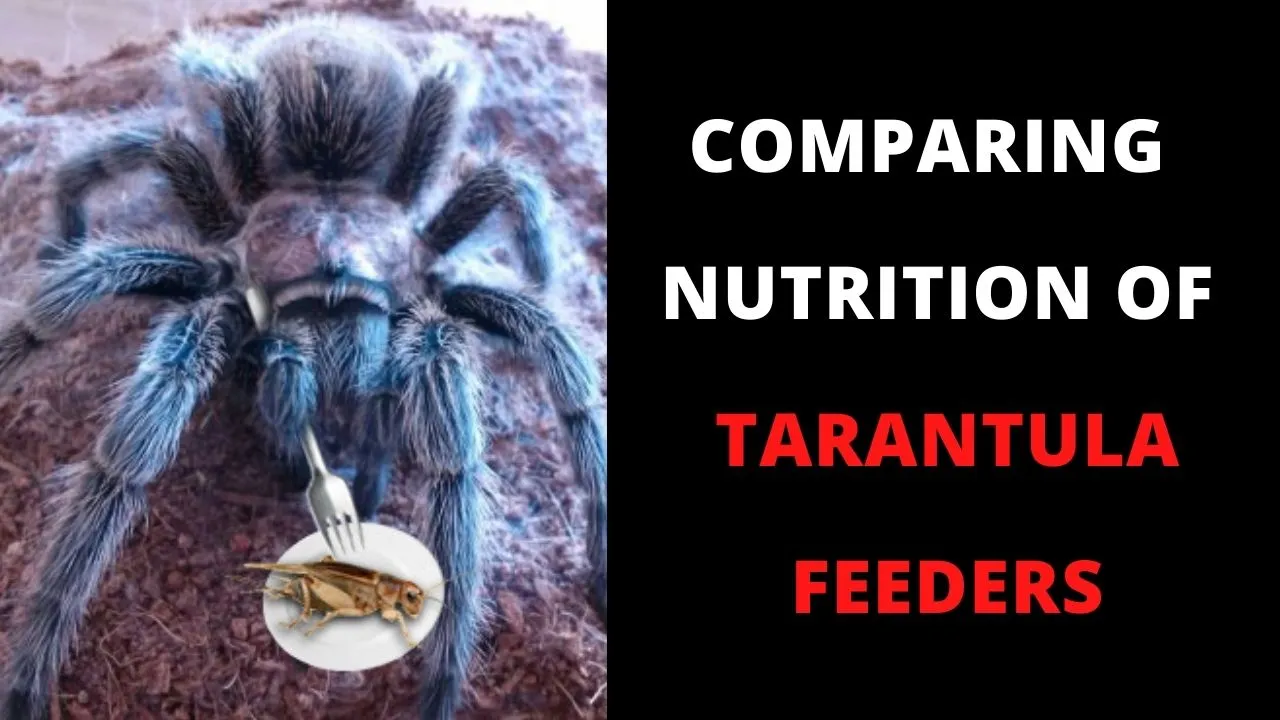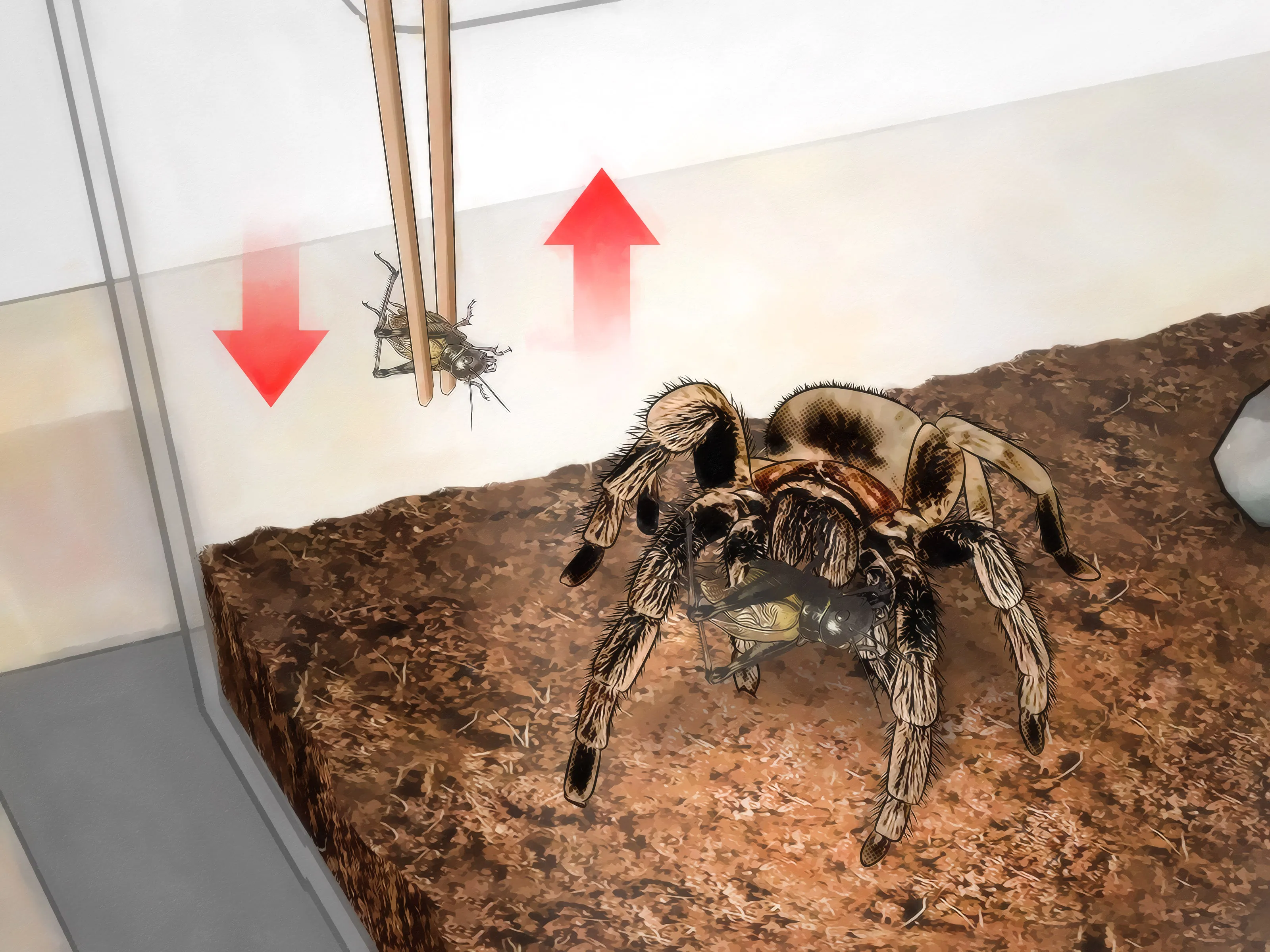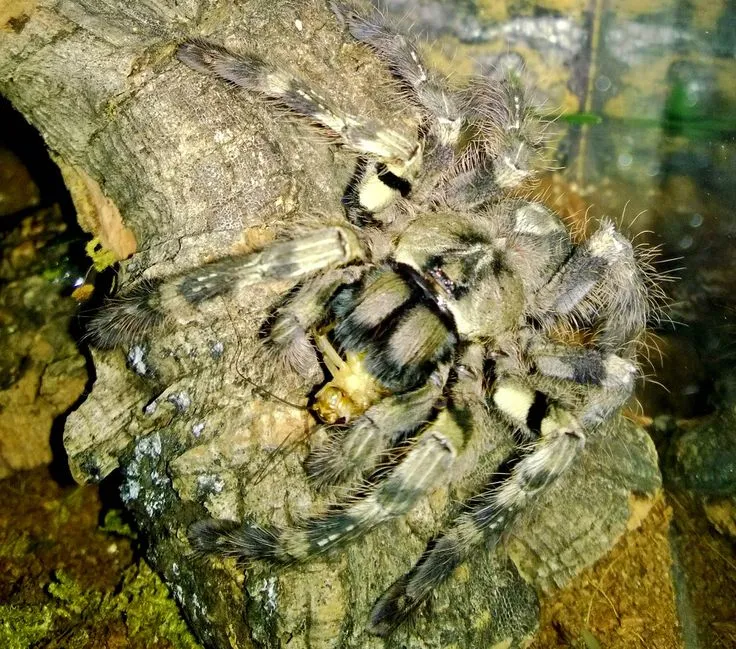Understanding Tarantula Feeding Needs
Feeding a tarantula seems simple enough, but understanding the nuances of their dietary needs is crucial for their health and longevity. Unlike many pets, tarantulas have specific requirements that vary based on several factors. These magnificent creatures require a balanced diet to thrive, but overfeeding can be just as detrimental as underfeeding. This guide will delve into the specifics of how much to feed your tarantula, ensuring you provide the right amount of food to promote their well-being. The amount you should feed your tarantula depends on a variety of factors, from the species of tarantula you have, to its size and the current stage of its life.
Factors Influencing Feeding Frequency
Several elements influence how often and how much you should feed your tarantula. Understanding these factors will help you tailor your feeding schedule to meet your pet’s specific requirements and keep them healthy.
Tarantula Species

Different tarantula species have varying metabolisms and feeding habits. Some species, like the fast-growing terrestrial species, may require more frequent feedings than others. Researching the specific needs of your tarantula species is essential. For example, some New World tarantulas tend to be more voracious eaters compared to Old World species. Some species, such as the Chilean Rose Hair, are known to be slower growers and have less demanding feeding needs. Others are more prone to refusing food, and you will need to adjust accordingly. Always research the specific needs of your particular species.
Tarantula Size
The size of your tarantula is a primary determinant of how much it needs to eat. A larger tarantula will naturally require more food than a smaller one. Juvenile tarantulas are growing rapidly and need more frequent feeding. As they mature, the frequency decreases. Always adjust the portion size to match your tarantula’s size; do not feed a tiny spiderling a meal appropriate for a fully grown adult. Ensure that the prey size is also appropriate for the tarantula’s size. This will help with the digestion process and reduce the risk of the tarantula being overwhelmed.
Tarantula Life Stage
The tarantula’s life stage (spiderling, juvenile, or adult) greatly impacts its feeding needs. Spiderlings require frequent small meals to support their rapid growth. Juveniles still need regular feeding, but not as often as spiderlings. Adult tarantulas can eat less frequently, often only once or twice a month. Each stage will have different nutritional needs, so adjust your approach according to the stage your tarantula is in.
Determining the Right Food Quantity

Choosing the correct amount of food is critical to avoid overfeeding or underfeeding. Observe your tarantula and make adjustments as necessary to maintain its health and vitality. The ideal amount varies based on the factors mentioned above, but some general guidelines can help.
Prey Size and Type
The size of the prey relative to your tarantula is important. A general rule is to offer prey that is roughly the same size as the tarantula’s abdomen or slightly smaller. For spiderlings, flightless fruit flies or pinhead crickets are appropriate. As they grow, you can increase the prey size to small crickets, mealworms, or roaches. Always ensure the prey is appropriate for your tarantula’s size. Provide a varied diet by offering different types of insects to provide a range of nutrients.
Observing Your Tarantula’s Behavior
Pay close attention to your tarantula’s behavior. A healthy, well-fed tarantula will typically be active and have a rounded abdomen. A tarantula that consistently refuses food may be nearing a molt or could be overfed. If a tarantula repeatedly refuses food, reduce the feeding frequency. Watch for signs of excess fat, such as a bulging abdomen, which indicates overfeeding. Regularly check your tarantula’s overall health and appearance to ensure it is thriving.
General Feeding Guidelines for Tarantulas

Here’s a breakdown of general feeding guidelines by life stage.
Spiderlings
Spiderlings, especially those in their early instars, should be fed frequently. Offer food every other day or even daily. Provide small prey items such as flightless fruit flies or pinhead crickets. Make sure the food is appropriate in size and easily manageable for the spiderling. Be vigilant in removing any uneaten food to prevent mold growth.
Juveniles
Juvenile tarantulas need regular feeding, but less frequently than spiderlings. Feed them every 3-7 days, depending on their growth rate and appetite. Offer appropriately sized crickets, mealworms, or roaches. Monitor their abdomen size; it should be full, but not excessively so. Adjust the feeding schedule as needed, based on their willingness to eat and overall health.
Adults

Adult tarantulas require feeding less often, typically every 1-3 weeks. Their metabolic rate slows down, and they do not need as much food. Offer a few appropriately sized crickets, mealworms, or roaches. Some adult tarantulas may even go months without eating, especially females that are preparing to lay eggs. Always provide a fresh water source. Monitor their abdomen size and overall health to make sure they’re not overfed or experiencing any health issues.
Feeding Frequency and Schedules
Establishing a consistent feeding schedule can help you keep track of your tarantula’s needs and ensure they get the appropriate amount of food. However, always be prepared to adjust the schedule based on your tarantula’s individual behavior and needs.
How Often to Feed
The frequency depends on the life stage, as mentioned earlier. Spiderlings should be fed more frequently, juveniles less often, and adults even less. Consider the species of your tarantula, its growth rate, and its general appetite to determine the best feeding frequency.
Creating a Feeding Schedule

Develop a feeding schedule that works for you and your tarantula. Mark the dates on your calendar or use a tracking app to ensure you feed your tarantula regularly. Observe your tarantula’s behavior between feedings and adjust the schedule accordingly. You should always be ready to deviate from the schedule if your tarantula is in premolt or shows other signs of needing a change.
Handling Uneaten Food
Dealing with uneaten food is an important part of tarantula care. Leftover prey can pose several risks, including stress to the tarantula, risk of injury to the tarantula and the potential for mold growth and pest infestations.
Removing Leftover Prey
Always remove uneaten food within 24 hours. Use tongs to remove any uneaten prey from the enclosure. This will prevent the prey from harassing your tarantula and reduce the risk of the prey biting your tarantula during a molt. Removing the uneaten food also helps maintain a clean enclosure.
Preventing Mold and Pests

Uneaten food can decompose and create an environment conducive to mold and pests. Regular removal of uneaten food helps prevent these issues. Mold can be harmful to your tarantula’s health, and pests can stress it. Make sure that you maintain a clean enclosure, including regularly cleaning the water dish and removing old molts.
Common Feeding Mistakes to Avoid
Avoid these common mistakes to keep your tarantula healthy and happy. These mistakes can lead to health problems or even shorten the life of your pet.
Overfeeding
Overfeeding can lead to obesity, which can strain your tarantula’s organs and potentially shorten its lifespan. Look for signs of a bloated abdomen, which indicates overfeeding. Reduce the feeding frequency if you suspect your tarantula is being overfed. A tarantula should have a slightly rounded abdomen, not a distended one.
Feeding Incorrect Prey

Avoid feeding your tarantula prey that is too large, as this can stress and injure them. Also, avoid feeding your tarantula prey that may be toxic or difficult to digest. Only feed insects that have been bred for food. Never feed wild-caught insects, as they may have pesticides or parasites. A healthy water source is also vital for tarantulas. A small, shallow dish filled with fresh water should always be available.
Conclusion
Feeding a tarantula is a delicate balance. By understanding your tarantula’s species, size, and life stage, and by paying close attention to its feeding habits, you can provide the right amount of food to keep your tarantula healthy and thriving. Avoid common mistakes, such as overfeeding and feeding the wrong prey. Remember, proper feeding is one of the most important aspects of tarantula care, ensuring a long and happy life for your fascinating pet. With careful observation and a well-thought-out feeding plan, you can provide your tarantula with the nutrition it needs to live a long, healthy life. Regularly consult with experienced tarantula keepers or a veterinarian if you have any concerns about your tarantula’s health or feeding habits.
